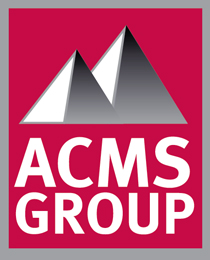Functional medical gas systems, like oxygen, compressed air, carbon dioxide, nitrous oxide and nitrogen, can be the difference between life or death for patients. Because they’re so crucial to a medical facility’s operation, you need a project management team who knows what they’re doing when installing these systems.
Keep reading to learn the safety steps our team follows to ensure all systems are fully functional and safe to operate once they’re installed.
Medical gas manifold rooms
A hospital’s manifold room typically has a number of cylinders filled with different types of gas with lines running to different areas throughout the hospital. These cylinders must always be fastened with chains or angle irons, as the flexible connection alone isn’t enough to secure it.
Each manifold room must also have a dedicated exhaust system on an emergency power system to remove dangerous gases from the air in an emergency.
Vacuum systems
Two pumps are required for all vacuum systems as a backup if one fails. The pressure in the vacuum must also be limited with a reduction device. Without the device, the high vacuum level in the piped system could collapse a patient’s lungs.
Medical air
Dew point monitors must be installed in each medical air system, as high moisture content can lead to bacterial growth or shut down a ventilator. The systems must also have carbon monoxide monitors set for a limit of 10 parts per million (ppm). Each air system must also have two compressors so that, if one fails, the other can supply enough oxygen for patients.
Supply and shutoff valves
The zone valve locations must show both the number of rooms served and the corresponding room numbers. A reputable project management team will ensure this information is clearly posted on the wall in bold colors and lettering.
Intervening walls
The National Fire Protection Association (NFPA) mandates that there must be an intervening wall between the zone valve and medical gas outlets. While this isn’t a problem for new construction, facilities may face compliance issues after a renovation or remodeling project.
Oxygen tank farm
COVID-19 led to high numbers of patients needing oxygen at the same time. The heavy use of oxygen farms leads to more condensation and ice accumulation on the equipment. Facilities should keep a fan near oxygen farms to blow warm air across the tanks to prevent the lines from freezing up.
Additional oxygen tank farm safety steps include posting signage regarding the presence of tanks and placing the tank farm on a concrete pad at least 50 feet from a wooden structure.
Emergency oxygen supply connection
Medical facilities must install an emergency oxygen supply connection (EOSC) to attach to a temporary, auxiliary oxygen source. The connection should be located along the exterior wall near the liquid oxygen tank. That way, an oxygen supply truck can connect to the facility’s oxygen system to supply oxygen if a tank is damaged.
ACMS Group can meet all your needs
If you need to install a new medical gas system or upgrade your current system, be sure to hire ACMS Group. With years of project management experience, you can ensure your system will be set up correctly and safely to ensure patient health and building compliance.
